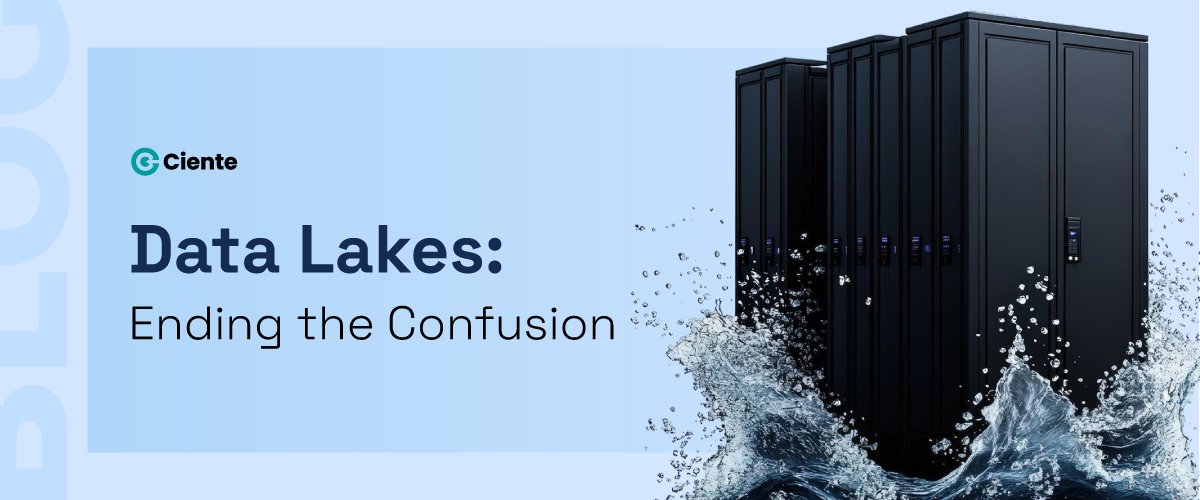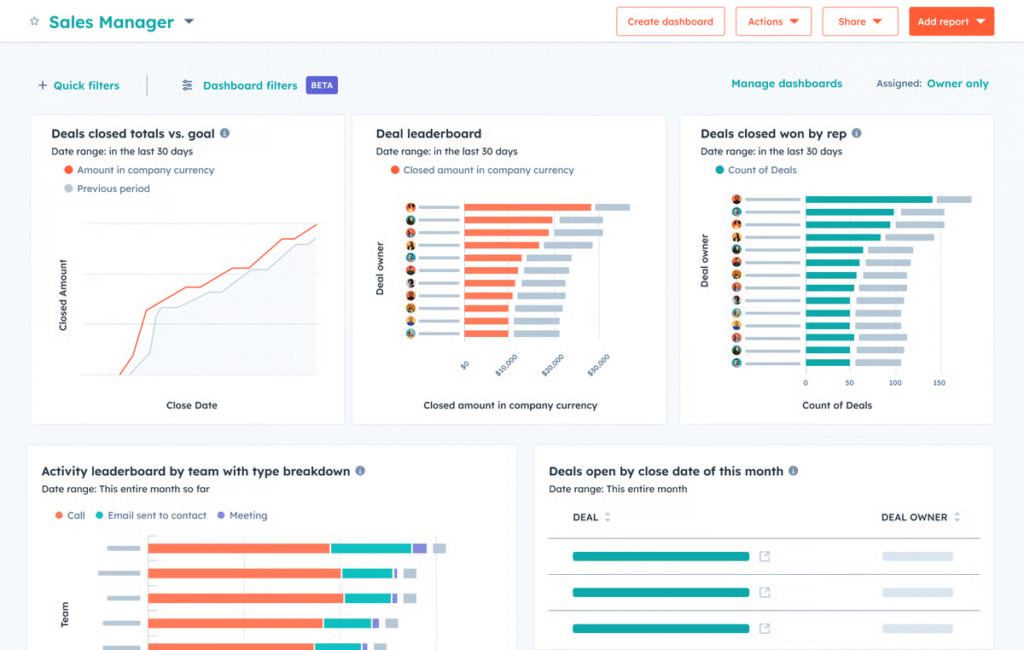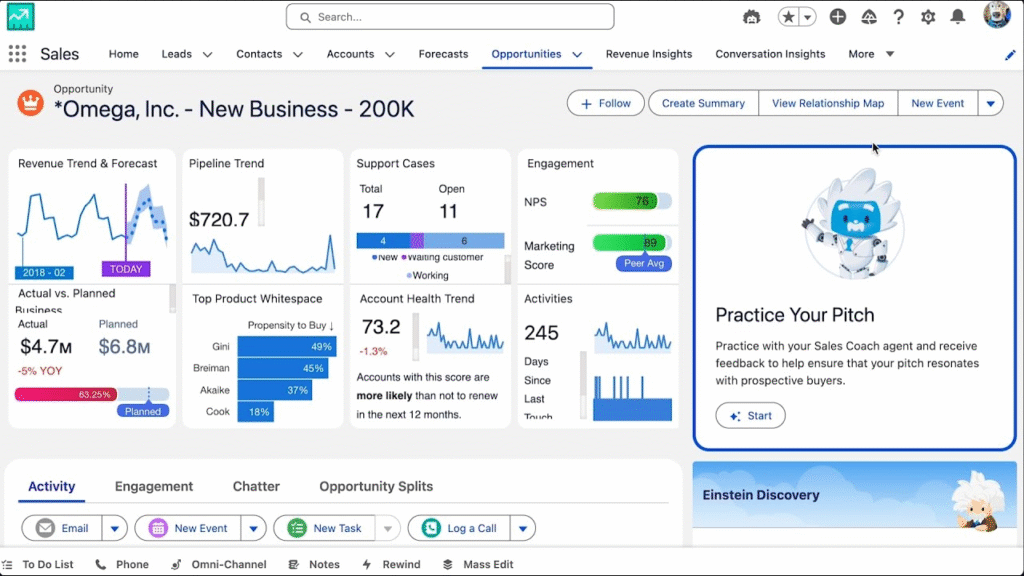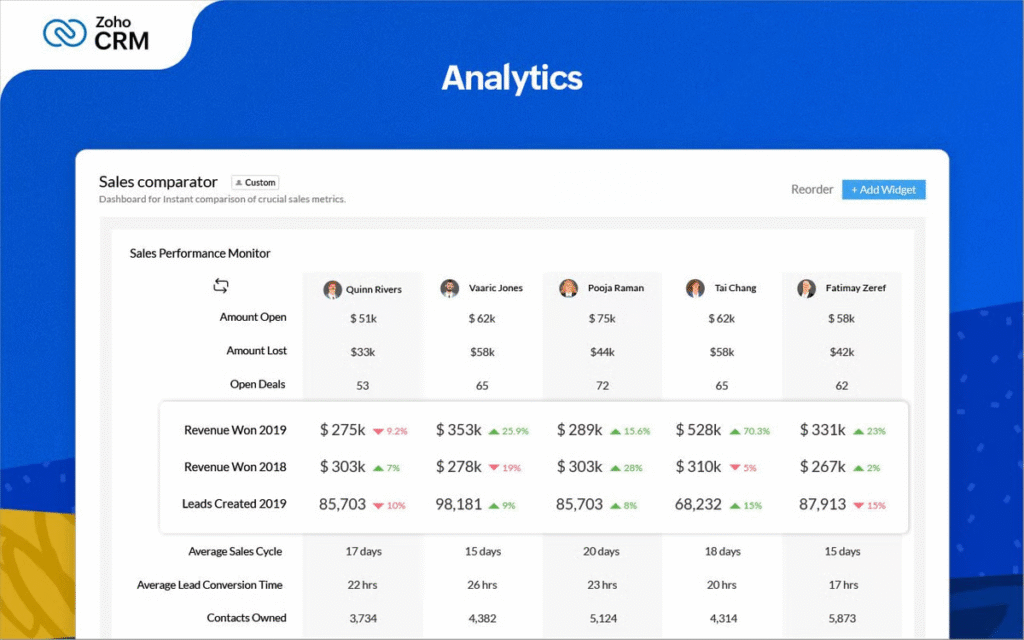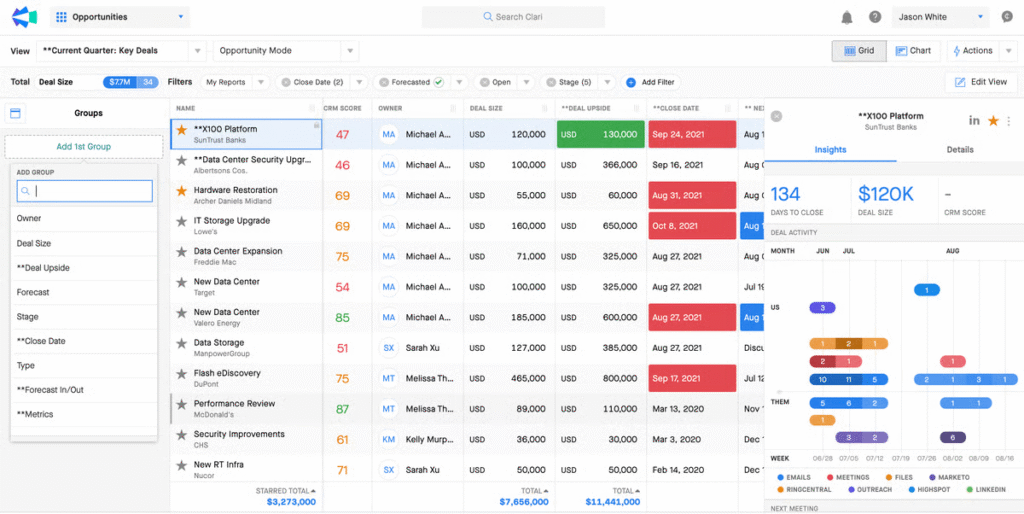Sales Pipeline Analysis
Shortening the sales cycle is among the top priorities for sales teams. How can analyzing your sales pipeline help you reach the conversion stage faster?
There are so many companies that possess advanced tech. But not all of them witness growth and success. And all the millions loaded onto the tech? Wasted.
As the automation tools mature, businesses are adopting them even rapidly. There’s an over-reliance. This has changed how brands approach sales, with many declaring certain aspects of it dead. This isn’t because the product wasn’t good enough or there wasn’t a large enough market.
It’s substantially because these companies weren’t aware of how to track their sales process.
They were missing out on sales pipeline analysis because they perceived sales as an immeasurable entity. One that cannot be relied on through tangible numbers.
But the truth is, performing a sales pipeline analysis is beneficial if you want to increase sales. It’s a vital function even if you’re currently satisfied with your sales performance.
But what exactly is a sales pipeline analysis, and what is its importance?
From a bird’s-eye view, analyzing the sales pipeline involves examining leads to understand their status and progress.
But to cover the topic more granularly, we explain the importance of conducting a sales pipeline analysis and list six top sales pipeline metrics to monitor in this blog.
What Do You Mean by Sales Pipeline Analysis?
Sales pipeline analysis helps you examine your sales pipeline to understand what is happening with your leads and why. It comprises numerous tools and techniques from performance tracking to predictive analytics.
And the objective is- systematic analysis of your leads that drives actionable insights.
It’s basically a visual representation of where your leads are in the overall sales process. It gives brands an overall idea of whether their leads are moving ahead or stuck at a specific stage. And highlights all of them with a “why.”
This is where your sales pipeline analysis dashboard comes in.
It’s the hub for all visual representations and their interpretations of your sales pipeline.
The dashboard brings all sales data together under one roof to help SDRs and marketers gauge insights from the key metrics that spotlight the leads’ journey, such as sales volume, customer acquisition, and revenue.
It’s basically a 360-degree view of your sales performance in real-time. And contributes to your decision-making. So that tangible numbers, and not guesswork, drive any tweaks in strategy or execution.
Let’s look at a sales pipeline analysis example from ScatterPie Analytics.
Sales Pipeline Analysis Example
An IT corporate training business was facing trouble measuring the effectiveness of its marketing campaigns. They couldn’t pinpoint where they were losing prospects, and what exactly the bottlenecks were.
The company couldn’t highlight its own high-value customers, and many of the opportunities also fell through. They wanted proper insights into their customers and also to elevate forecasting.
And the bottom line? Improve the quality of their sales processes and ultimately, sales numbers.
ScatterPie built an entire framework, and these were the primary objectives they underlined:
- Draw trends and patterns from the sales data.
- Elevate forecasting accuracy.
- Spotlight bottlenecks and weaknesses in the sales processes.
- Revamp marketing strategies.
Accordingly, ScatterPie proposed a robust solution: it leveraged the AngularJS Stack to primarily orchestrate a CRM that captures all the data from sales, daily operations, and leads. And then curate an analytics dashboard that holds all the data together.
That’s precisely what ended up happening.
The result was streamlined sales operations and efficiencies. And a significant revenue growth.
What Can Sales Pipeline Analysis Help You With?
Sales pipeline analysis spotlights crucial insights into your potential customers- where a lead is and how fast they’re moving through a deal.
All leads are different. Some progress rapidly because they know what they want from your brand, while others stall. Because they’re still deciding between competitors and pricing charts. Not all accounts have done their homework and are ready to buy, and these might require nurturing.
This is the differentiation that sales pipeline analysis highlights- the precise journey. And when it doesn’t, the analysis helps tweak the sales approach based on that.
What prompts the leads who convert to do so? What causes those who do not stay? Out of the two options, which one occurs more frequently?
How you actually choose to conduct an analysis depends on your sales pipeline and strategy. That’s the overall precedence. But we still want to offer you a basic framework.
How Can Businesses Analyze Their Sales Pipeline?
An ideal sales pipeline analysis framework must start by looking for accurate data. This way, you are spotting any gaps and bottlenecks early.
1. Collect and standardize lead data
Collect all the current and historically relevant data, from the number of sales deals and close rates to the activity log and stage progression. Ensure your sales team is logging accurate data and updating it for others. The data you collect must be usable.
Notice the gaps and any mismatched terms. And draw clear data-entry standards. Also, hold periodic audits to catch any inconsistencies from the get-go.
Standardize the required fields and definitions in your CRM to avoid any duplicate data that can skew your entire CRM. And then clearly define the key sales stages and lock in the most significant and imperative fields.
Remember to avoid any free texts whenever possible. And are replaced by drop-downs or picklists.
2. Can your sales pipeline meet your revenue goal?
The answer isn’t something you can guess. You must compare your sales pipeline’s total value to revenue objectives.
According to the web, your total pipeline value should be 3-4 times your revenue goal. That’s how you’ll ensure that you have enough sales opportunities. All sales deals are divided across different stages. But that doesn’t mean the pipeline flows like butter all the time.
Stalled negotiations can sometimes pile up at one stage for a long time. Meanwhile, some deals in the later stages may slip backwards. There are no clear steps about what to do or insights outlining what’s actually going on.
But your sales pipeline analytics dashboards can be your secret weapon.
You can leverage these reports to highlight trends and identify the glitches down the line. This’ll help your team restrategize on outreach and even reallocate resources.
3. Spotlight the bottlenecks
You can’t just let deals fall out or slip through the cracks. What’s causing the cracks? That’s the most vital component to gauge.
Start by comparing deal duration data- find out where deals linger the most, at least longer than average. What does the pattern say? Where are the most frequent stalls?
- Where are the longest gaps in follow-ups?
- Where are the deals repeatedly bouncing?
- The stages where prospects go silent often.
By assessing the stages closely, you can pinpoint what’s causing this stagnancy and inconsistency. Is it the lack of sales enablement materials or inadequate follow-up? Your sales pipeline analysis shall help you decode this tidbit. Following this, your team can orchestrate a precise and targeted solution for different ICPs.
It’s a sure-shot mechanism for helping your sales reps handle objections proactively and with confidence.
4. Keep on refining your sales pipeline regularly.
The strategy is here to keep on circling back. Don’t just assume your sales pipeline is a one-time fix. It needs consistent upgrades and auditing.
Because neither do customers stay the same, nor does the market. The sales pipeline isn’t static and doesn’t follow the one-size-fits-all notion. You have to meet the standards and ensure that the sales pipeline is healthy.
Check in and review to ascertain that no hiccups are holding you back. Update the data on all platforms and discard any dead leads. Leads that have checked out long ago are only going to bog you down.
Leverage data analytics to figure this out. Make informed decisions. Optimize your pipeline regularly.
5. Where are the cold leads?!
This has occurred numerous times where your marketing teams qualify leads, and SDRs schedule a call with them. But the appointment isn’t realized. The lead tells you they aren’t ready to purchase yet due to financial constraints.
What do you do? Do you leave them on your dashboard, hoping to follow up in a couple of months? Or you leave this account and hop onto the next one?
The second option isn’t feasible. While the first one is tactical. Cold leads aren’t dead.
44% of SDRs give up after the first call/rejection. But that’s what leads do, they say no before they say yes. If they aren’t positioned to buy right now, that doesn’t mean they won’t in the future.
Don’t abandon them yet. Set a reminder to check in. And write down the same beside the contact information so that your AEs know what to expect.
6. Cohort analysis.
Divide your sales pipeline. Don’t try to pool all your leads together into a single pool. This is where your analysis can gain more complexity.
Try to divide up your accounts across different cohorts- the month they entered the pipeline, the solution they’re tied to, or the geographical region. This division can help you analyze your sales pipeline better. It uncovers why your leads flow through some phases of the sales pipeline smoothly as compared to others.
And as you observe, compare the cohorts. What is different across the high-performing cohorts? When you find the answer, apply it to the entire sales pipeline.
Why Conduct A Sales Pipeline Analysis?
A healthy pipeline = swift progression of leads through each different stage. The result? High conversion rate.
But you can’t manually track if leads move through the pipeline healthily. You require a 360-degree pipeline view for this.
And that’s what its analysis is all about.
It lets you understand how to enhance your sales strategy. It places your strengths in the limelight, pushing you to replicate those accomplishments in the future. And it highlights your vulnerabilities, such as where leads keep being lost.
This analysis gives you both sides of the story- what’s working and what isn’t.
And the data, i.e., your sales pipeline metrics, help us take a peek just close enough to adjust the overall sales processes. All to build a consistent and sustainable growth model-
That churns our progressively higher ROI.
6 Sales Pipeline Metrics To Track and Analyze
We previously highlighted the importance of monitoring various pipeline KPIs. They are at the crux of conducting sales pipeline analysis effectively.
But which specific KPIs should actually be tracked?
Here are six key performance indicators to examine in the sales pipeline.
Rate of conversion at each stage
Your conversion rate signifies the percentage of leads that actually convert in relation to the total number of leads generated.
Naturally, the term “convert” has various interpretations. At the beginning of the sales process, it could just involve subscribing to your newsletter. However, ultimately, it translates to the lead buying something.
So, you must analyze your conversion rate for every individual step to pinpoint where you are losing the majority of leads.
A high conversion rate? You’re in the right direction. But a low one? Your top-of-funnel sales process requires improvement.
Duration of sales cycle
The length of your sales cycle reflects the average sales cycle duration or the time it takes for the average customer to move from the start to the finish of the pipeline.
The more time an account spends in the pipeline, the higher the likelihood that it’s dropping off.
And the slower potential customers progress through the sales process, the slower your revenue generation.
Speed of sales pipeline
The velocity of sales pipeline progress is linked to the length of the sales cycle. Instead of tracking lead retention in the pipeline, it focuses on the speed of revenue generation.
To figure it out, multiply the total deals in the pipeline by the average deal size, then divide by the average sales cycle duration.
This metric proves an advantage for the same purpose as the length of the sales cycle- it shows the speed and effectiveness of your sales pipeline in generating revenue.
Customer acquisition cost (CAC)
CAC marks the average cost of onboarding a new client. How can businesses measure it?
First, add all your marketing and sales expenses over a specific time frame. And then, divide the total by the total number of new customers acquired in the given period.
It provides an idea of your expenses related to your sales pipeline. If your Customer Acquisition Cost is excessively high, you are spending way too much, or your sales strategies are yielding very unsatisfactory outcomes.
In any case, you should focus on adjusting the ratio to benefit you.
Churn rate
Another vital factor to pay attention to is the customer retention rate. The churn rate is essentially a metric that indicates the portion of your potential and existing customers you no longer have within a specified timeframe.
To find it, divide the customers lost by the initial number of customers for that period, then multiply by 100.
It’s probably needless to mention that the higher your churn rate, the more negative impact it has on your situation. It indicates that a disconnect in later funnel stages is causing people to leave. Remember that these were the people who were initially interested.
Now your objective is to determine the churn’s cause.
Net promoter score (NPS)
NPS measures customer satisfaction. It just evaluates the level of satisfaction your customers have with your company. Survey your customers to determine your NPS.
Start by asking how likely they are to endorse your business on a scale from 1 to 10. That says a lot than you think.
A high NPS equals high customer satisfaction. And a low one suggests room for improvement.
But what do you do if your NPS doesn’t meet your expectations?
Go back to your existing customers. Inquire with your customers about what they believe is the disconnect. And then, apply this first-hand feedback to mend any obstacles.
Top 5 Sales Pipeline Analysis Tools
Marketing and sales today aren’t as manual as they used to be. Teams today are adopting tools and automation to make things simpler for them. And drive higher chances of success.
Even AI has moved on from being a rare magic wand to a must-have. Because without the correct infrastructure, you’re losing out on opportunities. In sales, you either close a deal, put them on the back burner, or lose them. These are the three basic scenarios.
But sales pipeline analysis tools help you efficiently manage your pipeline. It saves deals by categorizing, scoring, and communicating with the account. Then it’s up to you to nurture the lead.
If the leads aren’t ready, you can still hold their space. But only if you have a clear system fixed in place. It opens ample opportunities to build an authentic and trustworthy relationship with them.
An unmanaged pipeline negatively influences your bottom line. Why not take precautions?
HubSpot
Source
HubSpot’s Sales Hub is more of a unified system than a single tool. This modern sales software is sophisticated, yet simple to use. It’s specifically for startups and growing businesses wanting to build and revamp their sales pipeline.
HubSpot doesn’t focus merely on numbers. It goes a step further in helping deepen customer relationships and closing deals rapidly. This software bridges all front-office software with customer data for a comprehensive view of prospects and existing customers, especially where they’re in the sales funnel.
This all-in-one tool amalgamates intuitive automation, sales engagement, and AI-backed productivity features. Bringing together HubSpot’s best features. It also connects seamlessly with the brand’s Smart CRM.
There’s a richer context and insights across the entire buyer journey without any added complexity. For HubSpot, sales performance boils down to selling smarter, not harder.
Salesforce
Source
Salesforce’s Sales Cloud combines the power of humans with AI agents for tracking your growth regularly. Its powerful and comprehensive CRM features help streamline every sales function to facilitate productivity for businesses of all sizes.
And one of its most loved features is AI-powered Einstein analytics.
It helps teams prioritize high-value leads and close deals without any hindrances. Especially when coupled with features such as intelligent forecasting and predictive insights. And the automation and customization capabilities make room for your sales team to unburden from manual, repetitive tasks.
Your team doesn’t have to engage in manual follow-ups. Sales Cloud’s automation abilities do that for you. This way, your SDRs and AEs focus on strategic selling that adds to the bottom line.
Pipedrive
Source
Pipedrive’s sales analysis tool has an impressive range of use cases. And its user interface is visually intuitive with several drag-and-drop features that make your workflow cleaner.
Its dashboard is all about tracking deal momentum- how the deals are progressing, so as not to miss out on any accounts. You can progress/move the “deal” cards between stages, where a “rotten deal” feature flags all stagnant deals. And for ongoing deals, users can execute timely reminders and task notifications based on their deal activity history.
Additionally, Pipedrive is extremely precise.
Its forecasting feature is granular and offers customized forecast reports based on SDRs, pipeline stage, and close date- paired with visual reports and trend analysis.
Pipedrive also entails approval workflows and built-in quotes that help SDRs build and send proposals on time. The features follow standardized price points, ensuring that all proposals include accurate quotes.
There are timeline views, task automation, and simple notifications leveraged by the platform.
Your sales teams can remain engaged in deals without being logged into the app all the time. And users can pick up where they left off. This is a resourceful feature to elevate productivity- not merely for sales but also for cross-functional teams.
Zoho CRM
Source
Zoho CRM is popularly known as a cloud-based 360-degree customer relationship platform. One that caters to mid-scale to large-scale businesses.
But now, Zoho has revamped it with AI. Its pipeline visualization capabilities now come paired with AI-driven insights, funnel reports, and in-built lead scoring.
Three of its most loved features are sales automation capabilities, agile customization points, and an intuitive interface. These make Zoho CRM a sales analysis powerhouse and an intelligent suite of tools that encourage sales and marketing alignment.
It entails intuitive, real-time forecasting that predicts revenue across different facets- individual, team, and geographical region.
Additionally, Zoho CRM helps sales access detailed, granular customer histories. This has helped users elevate overall customer satisfaction scores by facilitating quick resolution.
And because of being highly scalable and affordable, Zoho CRM stands in a class of its own.
Clari
Source
We’ve saved the best for last.
From Zoom and Adobe to Finastra and Workday, Clari’s revenue platform is a market favorite. It focuses significantly on revenue generation and data-powered decision-making. And it is broadly loved by sales and RevOps teams.
One of its fascinating features is Clari Copilot. This component promotes organization and collaboration across shared environments. So that all the teams are on the same page.
And its predictive revenue insight feature is a sweet addition. One that helps sales teams close deals faster and follow up with detailed reports. And with trend flow and pulse, users can add their own insights to the existing ones. You can also ask your dashboard detailed questions regarding the deals in progress.
It offers “deal slippage alerts” that notify you when a deal could face a roadblock or is likely to progress more slowly. This prediction can help fix any bigger issues that haven’t materialized yet.
It’s all due to Clari’s granular insight not just in sales data, but data across finance, customer success, and marketing. With an umbrella perspective, the sales projections become more accurate, and cross-functional alignment follows.
The bottom line?
Clari makes sales analysis easier. But it doesn’t take away from human workers to add their own touches and insights.
Your Sales Pipeline Must Directly Reflect the Buyers’ Journey.
Outlining a sales strategy just isn’t enough. You have a framework in your hands, then what?
Several SDRs aren’t too motivated to prospect. And then, once you develop a sales pipeline, it’s easy for it to end up dry. It’s a cycle.
Your SDRs are more focused on how many of their appointments are realized and deals closed. The perspective shifts from prospecting. And in the next month, they’re already behind on their quota.
But in an effective and ideal sales pipeline, you focus on both sides equally.
There’s another mistake salespeople make. Several teams focus only on the stage where the opportunity is for a sales forecast. That’s not the whole picture.
That’s why understanding and efficiently managing your sales pipeline is imperative. For the entire sales process to reap the desired benefits.
It also ensures that the organization is in sync with the revenue objectives. To boost conversion rates and build a sustainable revenue generation model.

